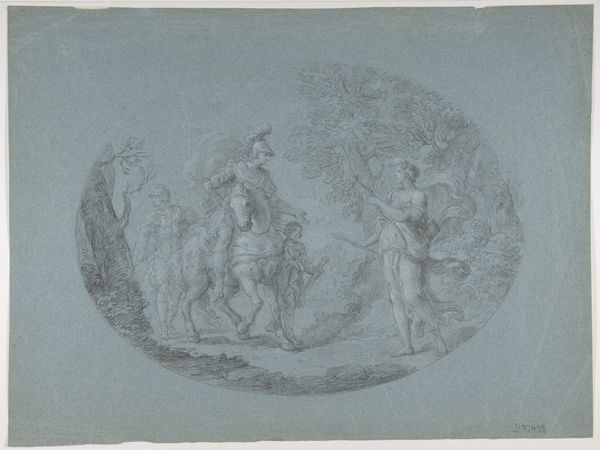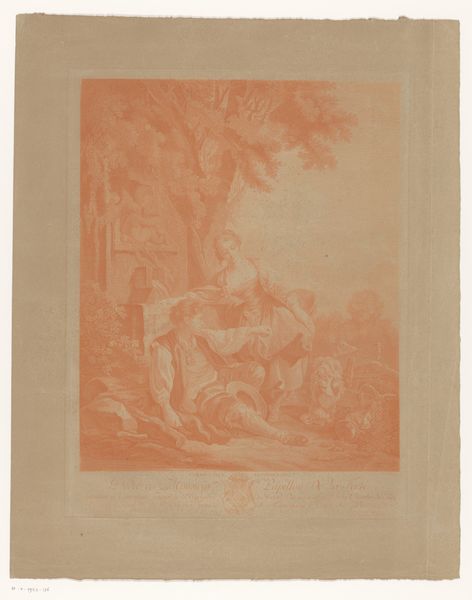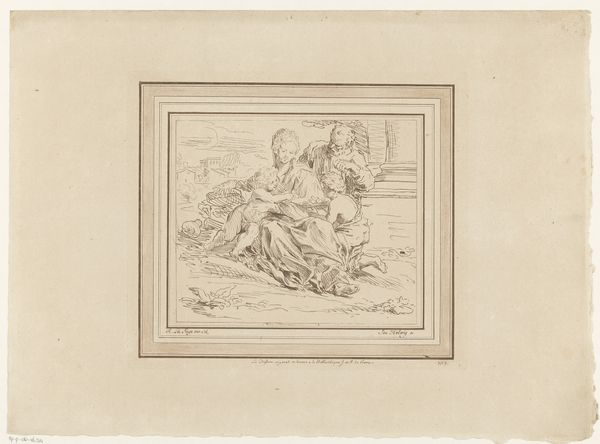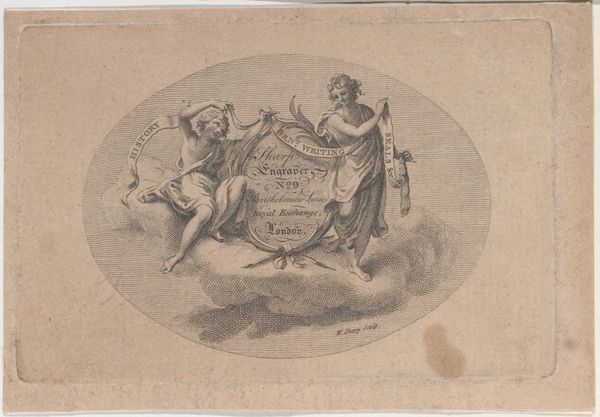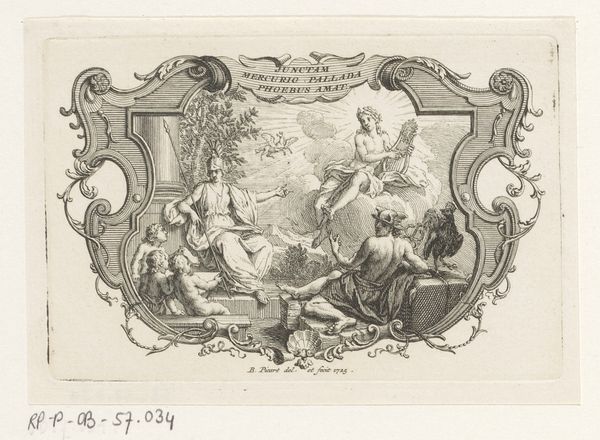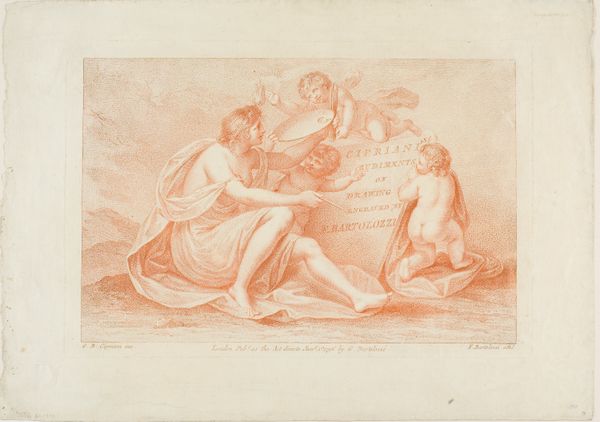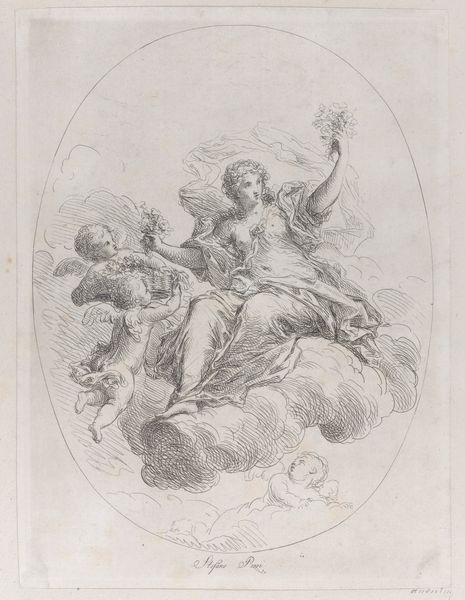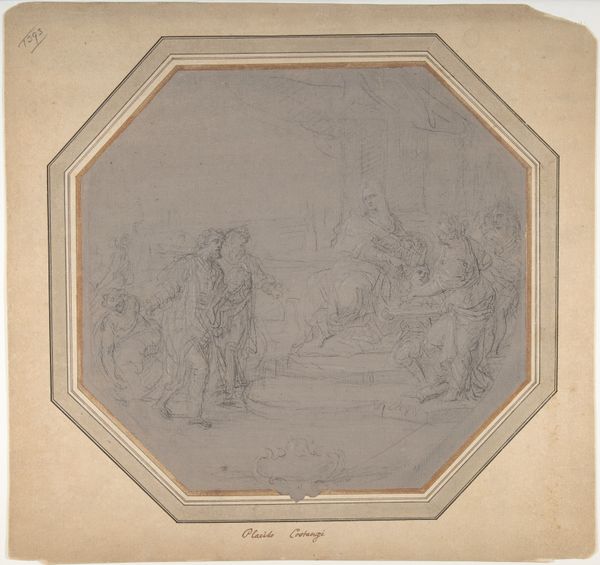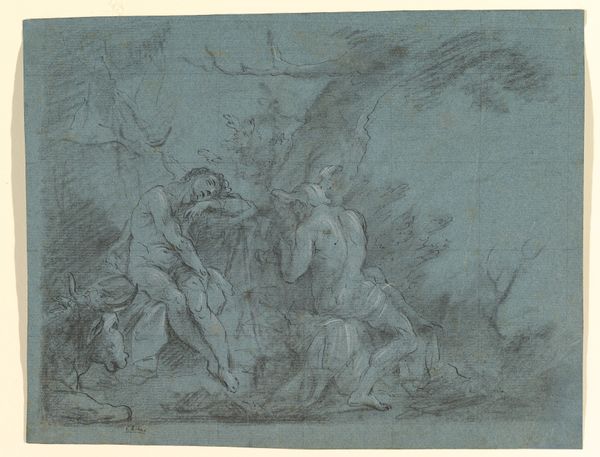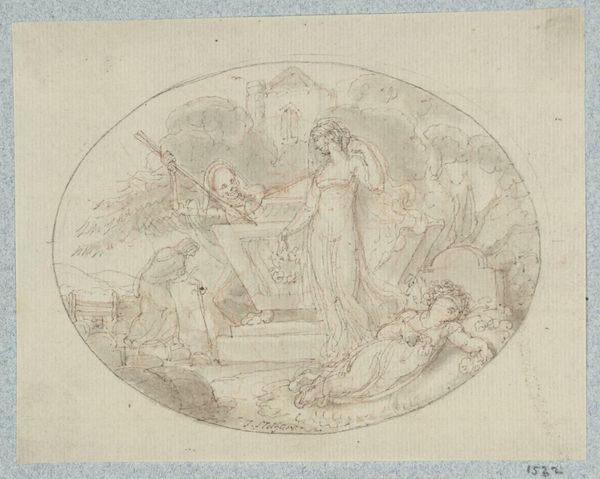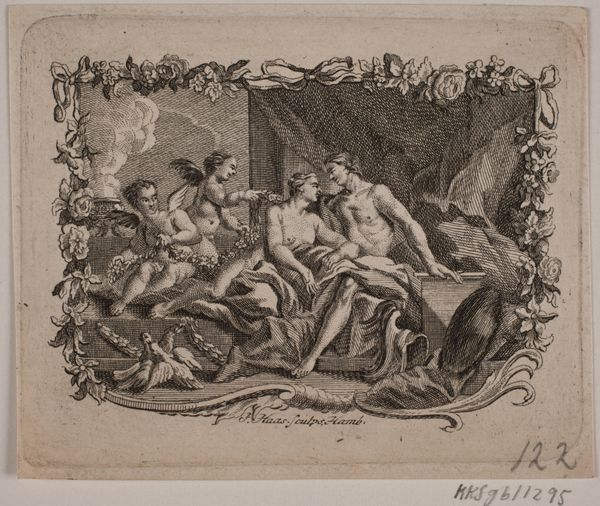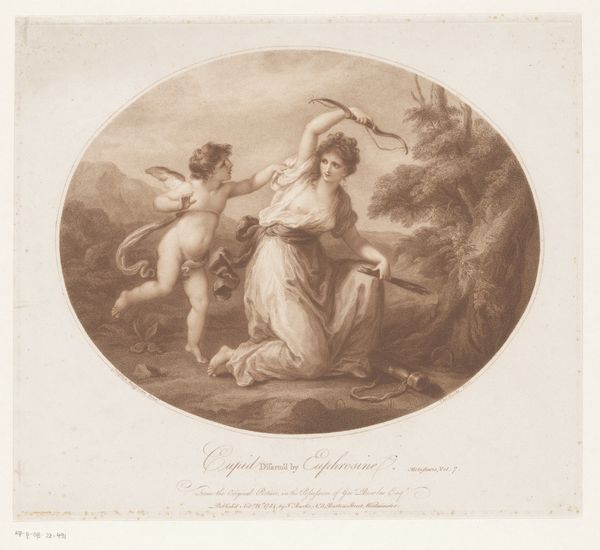
Venus in the Forge of Vulcan (Aeneid VIII: 370 ff) 1699 - 1768
0:00
0:00
drawing, print
#
portrait
#
drawing
#
baroque
# print
#
history-painting
Dimensions: Total: 12-11/16 x 17 in. (32.2 x 43.2 cm) Oval: 9-3/16 x 13 in. (23.3 x 33 cm)
Copyright: Public Domain
Curator: Here we have Stefano Pozzi's "Venus in the Forge of Vulcan," created sometime between 1699 and 1768. Editor: There's a real sense of Baroque drama here, even in a monochromatic sketch. All this dynamic tension is captured beautifully using subtle contrasts, what I guess we would consider "modello" technique. Curator: Indeed. Pozzi employs this history painting to evoke the world of gods and fabrication of armor. Consider, how are depictions of gods also indirectly images that convey political values through art? Editor: It is very easy to tell Venus is depicted as reclining. Is this intentional, suggesting she's removed from the manual labor taking place to the left? The light makes the figures pop off the pale blue ground; such contrast heightens the dynamism inherent in a blacksmith's workshop. Curator: Notice also the narrative embedded in the shield Vulcan forges – its very production monumentalizes history and legitimizes power, and it is history in the making. The museum serves here to validate art historical context too. Editor: Speaking of material, how does the choice of drawing over, say, paint, influence the reading? Does it suggest immediacy or a plan for something grander, and who does it suggest for: patron or other atelier members? Curator: Drawings like these often acted as a crucial step in art production and circulation, a method for transmitting ideas, and are useful in exploring patronage networks in 18th century Europe, so who got to view such things as drawings and not as painting? Editor: It definitely enriches how we experience this scene from the Aeneid, doesn't it? Gives us so much more to contemplate in our own contemporary environment. Curator: I agree; seeing this piece reveals how art's value extends beyond aesthetics and into these broader societal functions that shape our view on history.
Comments
No comments
Be the first to comment and join the conversation on the ultimate creative platform.
